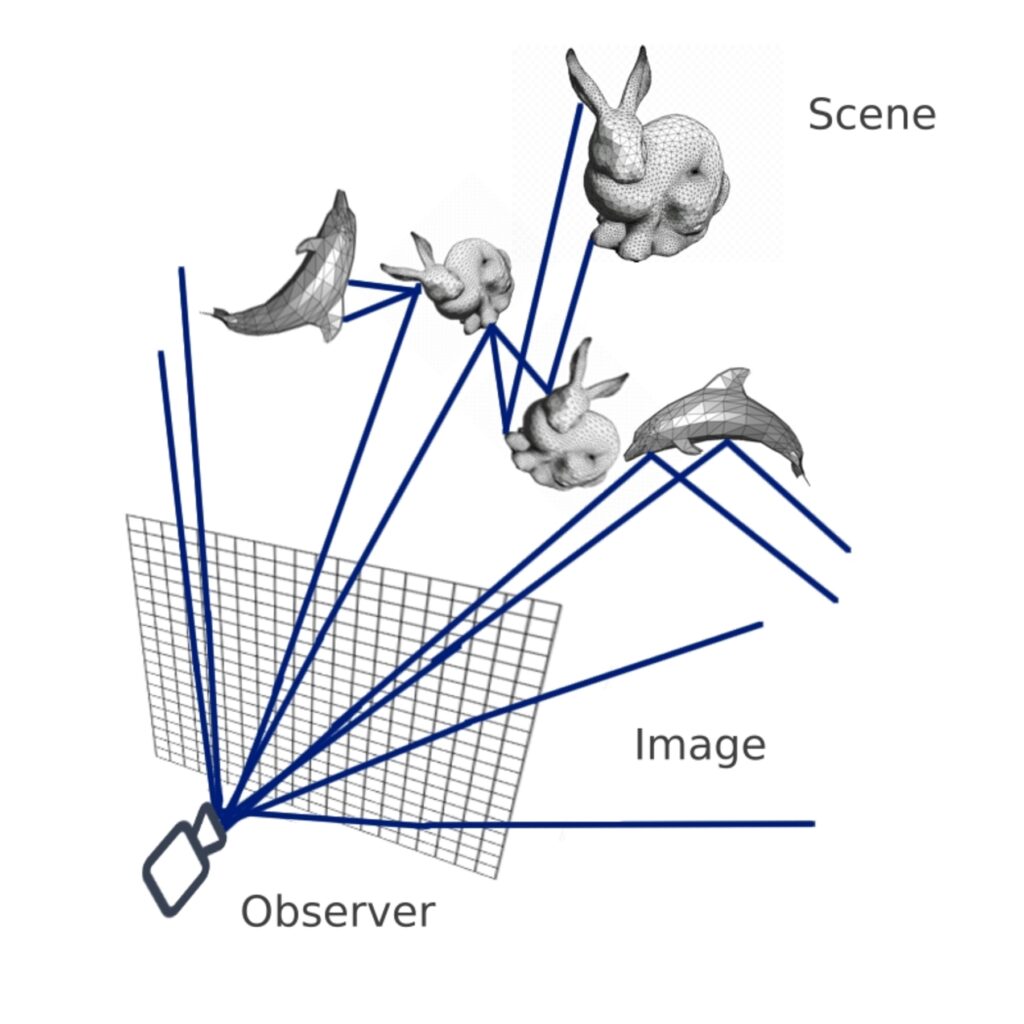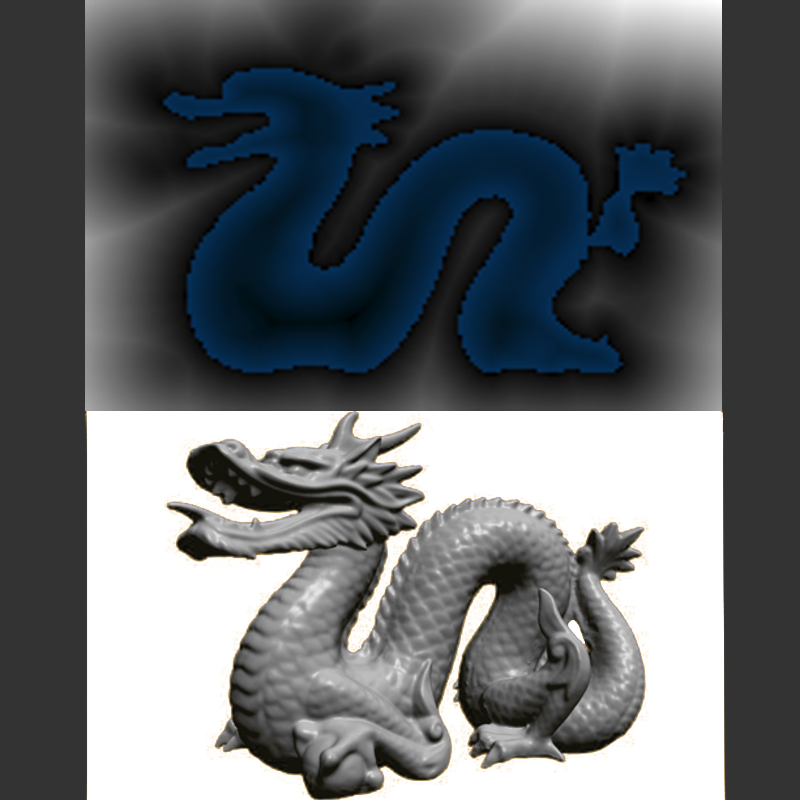In computer graphics, rendering is the process of transforming a scene from a numerical format into a picture that could be visualised and displayed on a screen. Figure 1 shows a diagram that outlines how the image is rendered by tracing multiple rays that scatter across the scene.
The simulation of scattering when light interacts with a surface depends on the surface material. With some materials (e.g., perfect mirrors) this operation is straightforward and computationally
inexpensive, whereas with others (e.g., translucent materials such as milk and marble), it is prohibitively expensive. The operation requires computing the closest point of intersection with a polygon in the light path; in the case of large scenes with tens of millions of polygons, this
operation is very expensive.
Spatial-data structures are often used to group polygons in the scene and accelerate ray-intersection tests. A signed distance field (SDF) is a grid of values that represent the closest distance to the surface of an object; SDFs are commonly used in collision detection and other
physical simulations. In Figure 2 (top), the SDF of a dragon mesh is shown. Light-blue refers to space inside the mesh and grey denotes space outside the dragon. The lightness of the colour varies to represent the closest distance to the surface of the dragon.
Spatial-data structures are often used to group polygons in the scene and accelerate ray-intersection tests. A signed distance field (SDF) is a grid of values that represent the closest distance to the surface of an object; SDFs are commonly used in collision detection and other
physical simulations. In Figure 2 (top), the SDF of a dragon mesh is shown. Light-blue refers to space inside the mesh and grey denotes space outside the dragon. The lightness of the colour varies to represent the closest distance to the surface of the dragon.
The method was evaluated in terms of correctness, through comparisons against ground-truth images and performance, by determining the viability of the pipeline for interactive rendering.
Performance was also compared to that of other spatial-data structures, such as the k-dimensional (k-d) tree.


References/Bibliography:
[1]P. Shirley and R. Morley, Realistic ray tracing.$c Peter Shirley, R. Keith Morley. Wellesley: Ak Peters, 2008.
Student: Luke Bjorn Scerri
Course: B.Sc. (Hons.) Computing Science
Supervisor: Dr Sandro Spina
Co-Supervisor: Dr Keith Bugeja
